Testdrive: Chevy Cruze + Low Tech = 58 MPG
What does $19K get you? A lot of mileage!
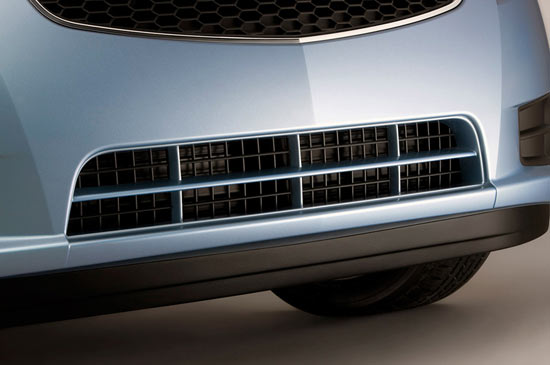
There are countless answers to the question of a great commuter car - answers that may depend on the padding of your wallet and what is important to you. Chances are that a reasonable consumer would be looking for a electric car or at least a hybrid such as the Toyota Prius or the Chevy Volt. However, those are fairly expensive cars and, as it turns out, you can get an almost ridiculous MPG in a non-hybrid car as well: Meet the Chevy Cruze Eco.
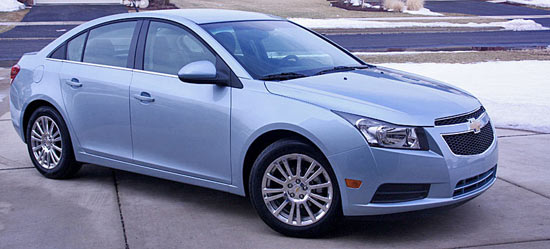
The Cruze lineup replaced the Cobalt not too long ago. It is not quite the brand new car GM says. It has been on the market since the 2008 model year in Korea as the Daewoo Lacetti and since last year as the Chevy Cruze in Europe. The delay of the car in the U.S. has to do with cost savings: The Cruze is essentially the same car as the Lacetti. However, there is one key difference.
Eco = 42 Changes
The Eco model is unique to the U.S. market and offers a range of weight and aerodynamic changes that are about as good as it gets as far as MPG ratings go if you are not moving to a diesel power plant.
The Eco has a 138 hp, 1.4 liter turbo charged engine (that is also used in the LTZ and LT models), as opposed to the 138 hp 1.8 liter in the LS model. The smaller engine is manufactured in Germany and used there for the current Opel Astra as an economic mid-level, non-diesel engine. It's the foundation in the Eco for a surprisingly high gas-mileage rating.
Besides the engine, GM also applied several aerodynamic changes that were tested and developed along-side the Volt in 500 hours of wind tunnel testing as well as some more or less elaborate techniques to save weight. Here are the most important changes:
- Weld flanges reduced 1 mm to 2 mm in length
Sign up to get the BEST of Tom's Guide direct to your inbox.
Get instant access to breaking news, the hottest reviews, great deals and helpful tips.
- Metal gauge thickness reduced by 1 mm
- Lightweight 17" wheels
- Low resistance tires
- Revised gear ratios (particularly 1st, 2nd and 6th gears)
- Unique front fascia with deeper front air dam
- Electronically controlled front air shutter that closes at higher speeds to reduce drag
- Metal pans below the car to improve air flow
- No spare tire
- Lowered suspension
- Trunk lid spoiler
The changes give the Eco a vehicle weight of 3009 pounds, which is 125 pounds less than the curb weight of the Cruze LS and 214 pounds less than the Cruze 1LT. The Eco's drag coefficient (cd) is 0.298, which is about 10% below the other Cruze models.
What is particularly interesting in the Eco is the automatic grille shutter in the front. The grille is closed during driving at higher speeds to improve drag. According to GM, the features results in a cd reduction of 0.016. The shutters can be automatically opened if the engine needs to be cooled.
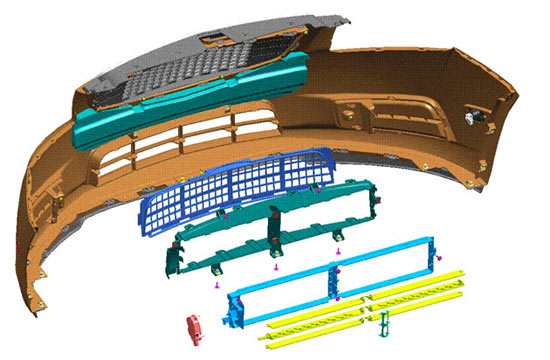
All put together, and compared to a hybrid car, you get a fairly sophisticated low-tech package that is designed to achieve maximum fuel economy. It is a serious approach which I would like to see much more often for our cars. It's not exactly rocket science, but if you look at the fact that the Cruze Eco stickers for $18,895 (including destination), compared to the base Cruze LS, which sells from $16,995 (including destination), it is an impressive feature set in a sub-$19,000 car.
According to GM, all changes result in a notable improvement in fuel efficiency: Compared to the 26/36 MPG (EPA, city/highway, manual transmission) for the 1.8 liter, the Eco is rated at 28/42 MPG with a manual transmission and 26/37 MPG for the automatic, which is available as an option, but defeats the purpose of this car. Realistic estimates? I took the Eco through rush hour traffic, suburban and highway driving over the period of a week to find out.
The MPG Game
When you drive a car like the Cruze Eco - or a hybrid for that matter - you do look for ways how to squeeze the most mileage out of the car. Of course, you want to know where the limits are. So I chose my high MPG test day carefully - without rain, on a typically empty highway in the far western suburbs of Chicago. The weight was kept low with just me in the car. It turns out that feather-foot driving allows you to easily exceed the EPA rating as I was able to average 57.9 MPG over a distance of 80 miles. This number isn't the maximum if you go to the extent of hypermiling techniques such as slipstreaming, which I do not recommend of course.
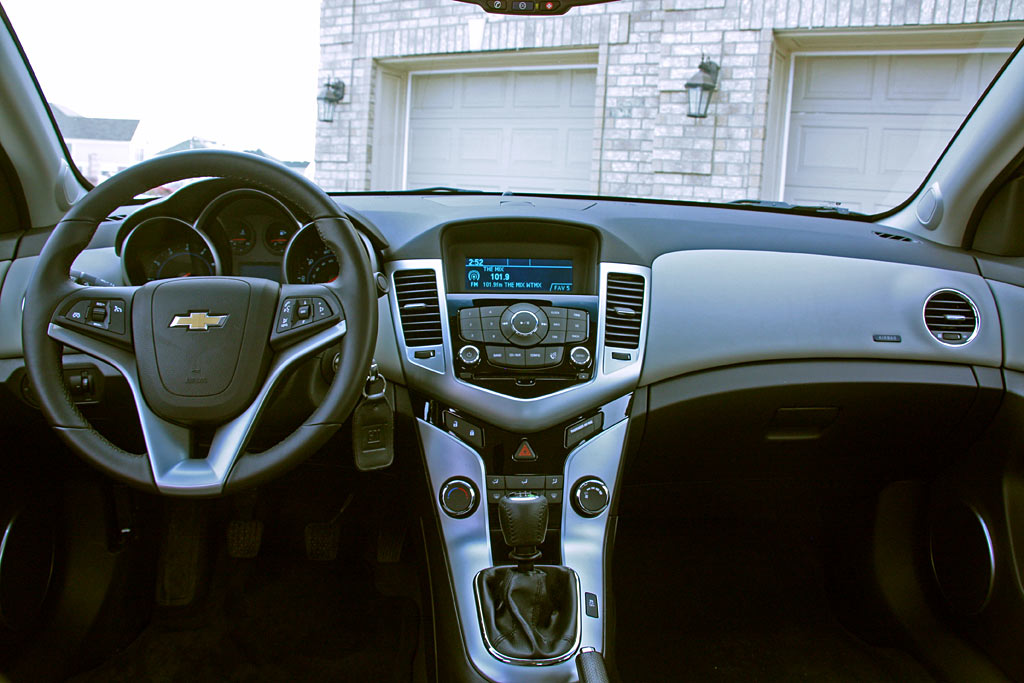
In a more reasonable driving environment of the Chicago rush hour, I ended up with 32.3 MPG on average (careful driving as well) and your average suburban driving put me at 39.8 MPG, which led me to believe that the EPA rating for the Eco is very conservative. As a side note, you won't get much more range out of the Eco than out of any other Cruze, however. The Eco (manual) has a smaller (12.6 gallon) fuel tank (compared to the 15.6 gallon tanks of all other Cruze models) due to a modified torsion beam.
The key to high fuel economy in the Eco lies just as much in your driving style as it is in the physical improvements of the car. There is a green dash light that constantly reminds you to upshift and keep the engine in the 1500 RMP neighborhood. The faster you get the Eco into its sixth gear, the more gas you can save. However, the fifth and sixth gear are extremely tall, feel weak and rough. Don't expect any engine responses if you are cruising at 1500 RPM in sixth gear and push the pedal in the oilpan. For driving enthusiasts, the fifth and sixth gear are fun killers.
The Eco's Other Persona
However, as economic the 1.4 liter may be, there is a different characteristic in the Eco that works well with the lower and stiffer suspension. The engine reacts nicely to your acceleration demands above 2800 rpm (the maximum torque of 148 lb.-ft. of torque is available between 1850 rpm and 4900 rpm). It's far from being a sports car, but it is appropriate for a compact car and gives the Eco a very lively character. You may even find yourself having fun chasing the Cruze around a few corners. Try that with a Prius.
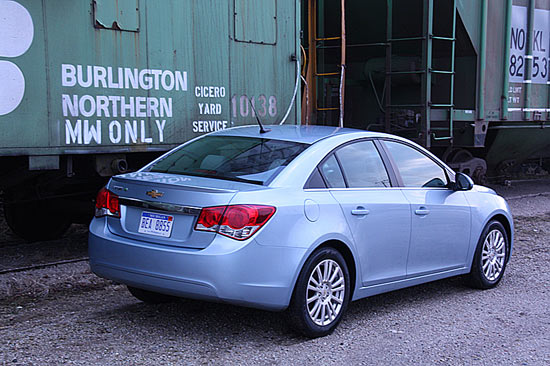
A pleasant surprise was also the overall build quality of the Eco. Sheetmetal gaps were tight and even and the interior design and build quality is light years ahead of Cruze's predecessor. It won't blow your socks off, but it’s a tastefully appointed cabin for a compact sedan that did not feel cheap to the eye or the touch. Just don't expect the same amenities you can get in a Prius or the Volt - this is a sub-$20,000 car and you will have to accept the cloth material on the seats and don't look for advanced gadgets or even electric seat adjustments. However, there is the leather-wrapped steering wheel from the Volt, available Bluetooth, OnStar integration, an multi-info display and a padded dash surface. The seats, by the way, are supportive and appropriate for this car. For my taste, they are too stiff for long-distance travel, but they are comfortable for the average commute.
My only complaint goes to the center dash radio display, which is outdated with its green letter display and very rough resolution. The pixel sizes are reminiscent to 1980s video games.
The Bottom Line
The Cruze Eco is distinctively different than a hybrid. It doesn't carry the high price tag, but offers a similar fuel economy that allows the driver to play with the car's capability to hit ridiculous MPGs. On the other hand, there is an almost sport character hidden in the Cruze, as long as you keep the RPMs above 2800. You will have to shift gears frequently (it's not a particularly leisurely drive) to keep the engine happy. However, as far as driving fun is concerned, there is much less tradeoff between fuel/economy and fun than you have to accept in an entry-level hybrid or full electric car.
The ECO is the most reasonable choice within the Cruze lineup and the obvious choice is the Eco with a manual transmission. I have always enjoyed manual transmissions, but have to say that the Eco could use some improvements in this department. Especially the second and third gears were tough to select and I am somewhat compelled to believe that if you haven't driven a stickshift car before, the Cruze Eco won't make you a big fan of manual transmissions.
At about $19,000, The Cruze Eco isn't a bargain if you look at the car from a compact vehicle perspective. If you compare the car to competing hybrids, you are looking at a few thousand dollars more and the Eco equation suddenly makes sense. Among the fuel-efficiency-trimmed compact cars on the market today, the Cruze Eco is among the most reasonable options. It does not always have to be a hybrid. For most commuters, the Eco may, in fact, be the much more economical alternative.
Wolfgang Gruener is Director, digital strategy and content experience at American Eagle, where he specializes in strategic data analysis, user behavior models and information architecture (IA), as well as content strategy and governance. He was also Managing Editor of the website TG Daily and contributor to sites including Tom's Guide and Tom's Hardware.
